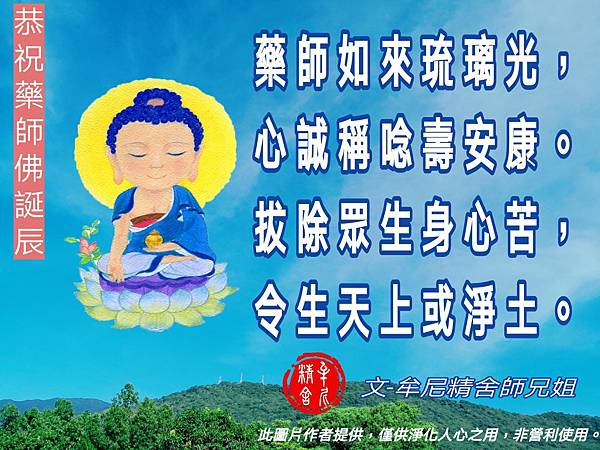序
本文可大分為金剛經的三句義與禪門料簡二段。
金剛經的三句格式出現十分頻繁,有人以「即非邏輯」來理解;然而,金剛經所欲闡明者,乃佛之覺悟和凡夫的見解之不同。凡夫的理解、領悟,或有深淺層次、與一般和專業之不同,但在佛 (覺) 和凡夫 (不覺) 之間,卻只有「悟」與「迷」一條明確的界線之兩邊。由「覺」的角度視之,修行中的許多次第、階段,並未曾於「覺」之上增添什麼,亦無成就什麼。故邏輯推導之三段論式並非正確的解讀。
究竟「非A」要非掉什麼?是否如語言邏輯之理解,「非A」僅僅是A 的他者,亦即 -A?乃本文所欲探討的重點之一。大乘菩薩雖不否定聲聞緣覺「因緣所生,本無自性」之現象界的理解,然就本體界的終極目標而言,大乘菩薩欲將自己以及其他所有眾生,帶離現象界的苦、置於本體界的樂,於本體界之安忍鎧中,生「常樂我淨」之究極佛心、置眾生於無餘依之究竟涅槃。是故,「緣生而無自性之空」亦非「非A」之正確理解。
一般解釋金剛經的「是名」,多援用龍樹《中論》中「亦為是假名」的「假名」,作為詮釋之基礎。prajñaptir 指的是議定、安排、教導、施設,鳩摩羅什譯為「名」。upādāya 指的是獲得、攜帶、藉由、假借,鳩摩羅什譯為「假」,根據梵文原意,此「假」,應是「假借」,而非「假而不實」之意。sā prajñaptir upādāya 合起來,意謂:此空,不過是基於前述因緣所生所建立之權宜性說法,非於因緣所生法外,另有一物曰空,故是依賴他事、繫於他事而決之施設。此「假名」,指的是「空」字,但偈中,鳩摩羅什所譯的「亦為是假名」,並沒有把主詞「此」翻譯出來,容易讓人誤以為,這個「亦」,乃針對前面的「因緣所生法」而言。故將因緣所生法解釋為假立之安名,恐亦是對於《中論》偈之誤讀。
比對金剛經諸譯,笈多的金剛經翻譯,乃逐字對應,印度梵語之文法順序完全未經更改,於研究金剛經梵文原意有不可磨滅之重要價值。本文將其與鳩譯及梵文並列比對,發現,真如、法性、法身等詞於鳩譯中完全未出現。
「因緣所生法」是虛妄、生滅、無常、無自性,之所以如此,乃因為虛妄之根源「無始無明」未破,以虛妄之意識心觀察領解因緣所生的現象,一切皆是緣生緣滅而無自性;然若虛妄之根源打破,則「因緣所生法」當體即是不虛妄的「非因緣所生法」,就是佛性、真如、阿耨多羅三藐三菩提。由佛性觀之,一切緣生緣滅之現象皆是真實、不生不滅、常樂我淨、以無自性為自性,亦名曰「如」,此方是真正的「空」義。
於禪門料簡一段,本文先從「拈花微笑」公案連結金剛經義與禪門宗旨之互通關係,將該公案以金剛經的三句格式簡潔表示為:「花,非花,彼故説名為花。」或更形象化的:「花,太陽,太陽下的花。」
以下,敘述禪門融通西來佛學意旨與東方玄學大意,並以東方的老莊玄學語言表示現象界與本體界合一的「兩行」。
「兩行」者,與金剛經的三句義,及禪師的「竪指」動作,乃是等義:不離生滅變化,而得涅槃,不出魔界,而入佛界;道無所不在,佛性光芒浸潤萬事萬物,同一而不可分。「非指」、「非馬」並非「指」與「馬」之泯滅,亦非「指」與「馬」以外之另一事物,而是無所不在的「道」或「佛性」。
禪宗法式,由信心銘開始,始有具體之文字描述。其後石頭參同契、洞山五位、臨濟四料簡等,雖以道家語言外貌,或援引「取坎填離」之理論,然本文指出,其文字背後所欲闡示之內容,實是金剛經三句之變體,與「拈花微笑」之意旨無別。
Preface
This article can be briefly divided into two main paragraphs, the meaning of three-sentence format of the Diamond Sutra and the Zen sorting.
The three-sentence format of the Diamond Sutra appears very frequently. Some people understand it as the "then not” logic. However, what the Diamond Sutra intends to clarify is the difference between the enlightenment of the Buddha and the view of ordinary people. Ordinary people's understanding and comprehension may have a deep and shallow level, which is different from the general and professional, but between the Buddha (enlightened) and the ordinary (unconscious), there are only two sides of a clear boundary between "enlightenment" and "delusion". From the perspective of "enlightenment", the many stages and stages of practice have not added anything to "enlightenment", nor have they accomplished anything. Therefore, the syllogism of logical derivation is not a correct interpretation.
What exactly does "non-A" have to drop or wipe away? Is "non-A" just the other of A, that is, -A, as understood by the linguistic logic, is one of the focuses of this article.
Although Mahayana Bodhisattva does not deny the phenomenal realm understanding of Shravaka that once anything is born of causation, there is no self-nature thereafter, but in terms of the ultimate goal of the real world, Mahayana Bodhisattva wants to take himself and all other sentient beings away from the phenomenal realm and suffering, to the happiness placed in the realm of noumenon, in the armor of forbearance in the realm of noumenon, and the ultimate Buddha-mind of "always blissful and pure", and eventually achieve to the ultimate nirvana that places all sentient beings in it. Therefore, "emptiness without self-nature" is also not the correct understanding of "non-A".
The "pseudo name" of "is also a pseudo name" in Nagarjuna's "Madhyamaka Shastra" is often used as the basis for interpretation of the general understanding of the "is named as" of the Diamond Sutra.
Prajñaptir means negotiation, arrangement, teaching, establishment, which Kumarajiva translates as "name". Upādāya refers to obtaining, carrying, passing, and borrowing. Kumarajiva translates it as "false". According to the original Sanskrit meaning, this "false" should mean "borrowing", not "false but not real".
Sā prajñaptir upādāya, together, means: this emptiness is just an expedient statement based on the above-mentioned causation, but not that beside the dharma arising from causation, there is another thing called emptiness, so it is dependent on other things, tied to other things, and therefore is called “the dependent facility”. This "pseudo name" refers to the word "empty". But in the verse, the translation of "is also a pseudo name" by Kumarajiva does not show the subject "this", and therefore is easy for people to mistakenly think that this "is also a pseudo name" refers to the previous “dharma arising from conditions”. Therefore, the interpretation of the dharma arising from causation as a hypothetical naming may also be a misreading of the verses of the "Madhyamaka Shastra”.
Compared with the various translations of the Diamond Sutra, the translation of the Diamond Sutra by Gupta corresponds to each word, and the grammatical sequence of the Indian Sanskrit has not been changed at all, which is of indelible value in the study of the original meaning of the Diamond Sutra in Sanskrit. This article compares side by side with Kumarajiva's translation and Sanskrit, and finds that words such as tathatā, dharmata, and dharmakaya do not appear in Kumarajiva's translation at all.
The "dharma arising from causation" is illusory, arising and dying, impermanent, and without self-nature. Conditions arise and conditions cease, but there is no self-nature in it; However, if the source of falsehood is broken, the "dharma arising from causation" will be the “non-false dharma” that does not arise from causation, which is the buddha-nature, the true reality, and the anuttara samyaksambuddha. Viewed from the perspective of buddha-nature, all phenomena that arise and disappear due to conditions are real, non-generation and non-destruction, always happy with self-purity, with no self-nature as self-nature, also known as "be", this is the true meaning of "emptiness".
In the section of Zen sorting, this article first tries to connect the intercommunication between the meaning of the Diamond Sutra and the central meaning of the Zen from the koan of “Picking Up Flower And Smiles”, and expresses the koan in the form of the three-sentence format of the Diamond Sutra succinctly as follows: “Flower, non-flower, as so it is called flower." Or more figuratively: "Flower, sun, flower under the sun."
The following describes that the Zen School has successively integrated the meaning of Western Buddhism and Eastern metaphysics, and expresses the "Two Lines" as the unity of the phenomenal world and the noumenal realm in the eastern language of Lao and Zhuang metaphysics.
The meaning of the "Two Lines" is equivalent to the three-sentence format of the Diamond Sutra and the gesture of the Zen master's "finger pointing up": Without being separated from the transformation of birth and extinction, one can attain nirvana, and without leaving the demon realm, one can enter the buddha realm; the Tao is omnipresent, and the light of buddha nature permeates all things, whole and indivisible. "Non-finger" and "non-horse" are not the annihilation of “finger" and "horse", or something other than "finger" and "horse", but the ubiquitous "dao" or "buddha-nature".
Zen’s methodology, starting from the “Inscription Of Faith”, has a specific text description. Afterwards, along the “Shito Tsantongqi”, the “Five Positions of Dongshan” and the “Four Sortings of Linji”, etc., although the appearance of the Taoist language is used, or even the theory of "taking the Kan and adding the Li" is quoted, this article points out that, their contents behind the text are actually the same. They are the variant of the three-sentence format of the Diamond Sutra and have no difference from the meaning of "Picking Up Flower And Smiles" koan.




















